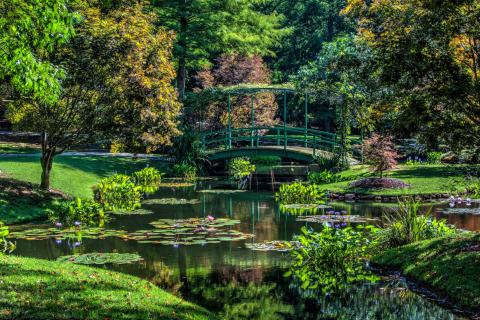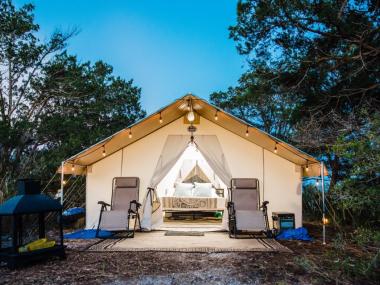Waterlilies: Jewels of the Water Garden
There’s something captivating about waterlilies. Their colorful blooms glisten like jewels as they appear to float, almost magically, on top of the water, transforming a pond or water garden into a living work of art. The flowers come in a range of colors, including white, pink, red, yellow, blue and purple, and many are fragrant. There are both hardy and tropical selections. Some are large and require lots of space, while others are dwarf and can be easily grown in containers on a patio or balcony.
Hardy versus Tropical Types

Waterlilies are relatively easy to grow if you follow a few guidelines. Both hardy and tropical selections prefer a heavy garden soil (no compost or manure), regular fertilization and a minimum of 6 hours of direct sunlight, daily.
Hardy types may be planted in early spring and will typically bloom from May through September. They will also survive over the winter (in a dormant state) in a pond provided the roots don’t freeze. Hardy waterlilies grow from a horizontal rhizome (think of a long carrot) that produces growing points or eyes along the rhizome. The blooms — cup shaped or starry-like, open in the morning and close in the afternoon. The rounded leaves are usually thick and leathery with smooth edges.
Tropical waterlilies require water temperatures that are 69-70 degrees F. At Gibbs Gardens, Jim Gibbs waits until June 1 before he plants the tropical selections to make sure the water is warm enough. Tropicals tend to have larger flowers that are held high above their foliage and blooms that continue until frost. Only tropical selections produce blue or purple flowers. All the leaves and flowers radiate from a single central crown. The leaves or pads are thin with scalloped or toothy edges, and the decorative foliage is often mottled or splotched.
The tropicals are divided in to two groups:
- The day bloomers: Flowers open mid-morning and close in late afternoon.
- The night bloomers: Flowers open in early evening and close the next morning. Depending on when you are home to enjoy your garden, you may want to plant some of each.
Tips for Growing Waterlilies

1. Place containers in a pond so that the water is at least 8" to 12" deep to begin, and as plants become established, move the container to a deeper spot, 12" to 24". For dwarf selections, the water only needs to be 6" to 8" deep.
2. Use a rich potting soil. Fill a container halfway, then add aquatic fertilizer tabs and push them into the soil. Add the rest of the soil.
3. Leave the crown of the rhizome slightly exposed.
4. Fertilize on a regular basis, twice a month for tropicals.
5. Groom plants, remove yellow leaves and spent blossoms.
6. Divide hardy waterlilies every spring to ensure the best blooming.
7. A word of caution: Left unchecked, these exotic flowers can become invasive. Avoid planting them in ponds or water gardens that flow into creeks, lakes or natural waterways.
Garden Inspiration

To see a beautiful display of waterlilies, visit Gibbs Gardens during the Monet Waterlily Festival in September. For more information, visit gibbsgardens.com or call 770-893-1881. Please note seasonal hours; call for information.




